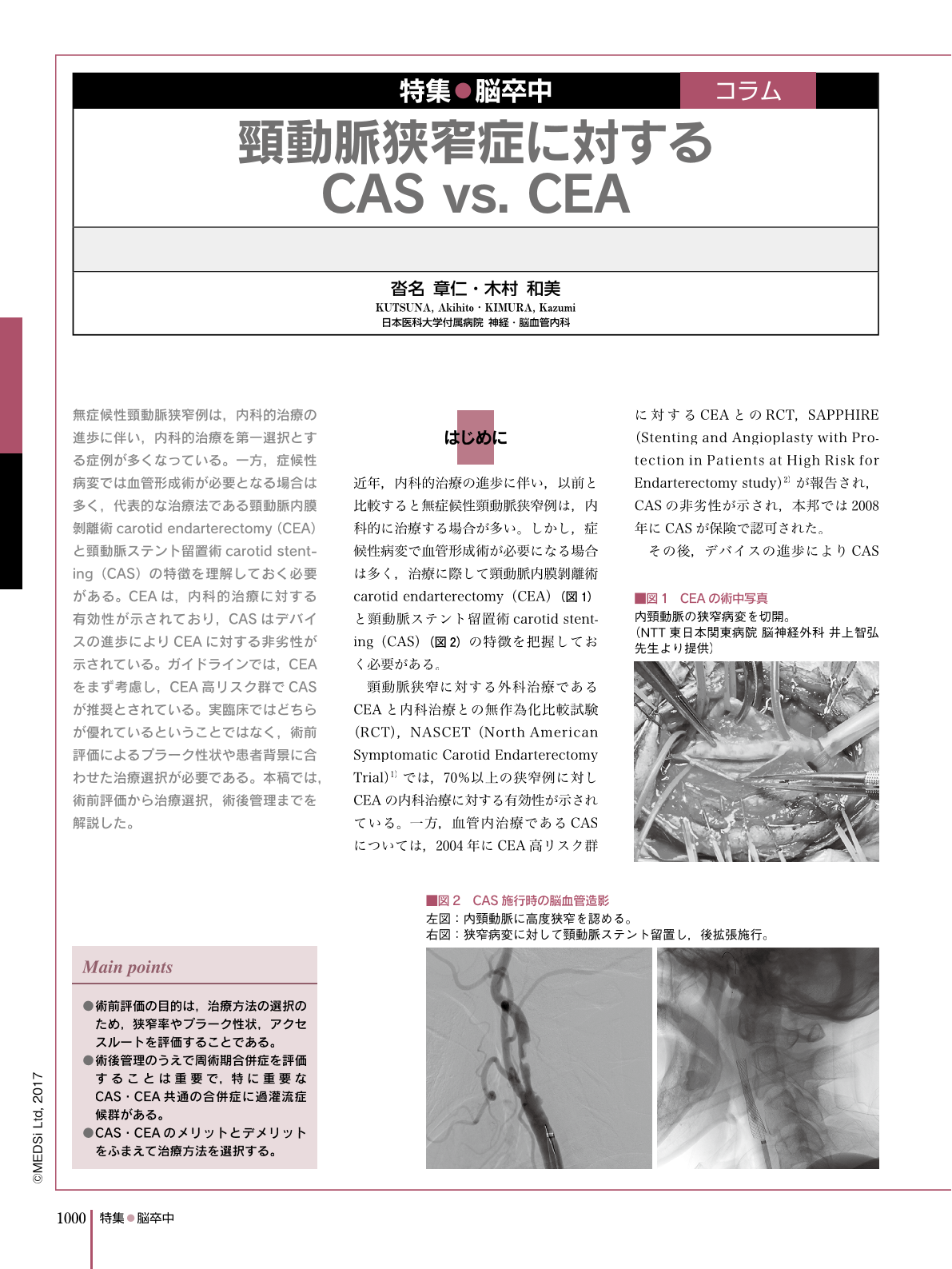Japanese
English
- 有料閲覧
- Abstract 文献概要
- 1ページ目 Look Inside
- 参考文献 Reference
無症候性頸動脈狭窄例は,内科的治療の進歩に伴い,内科的治療を第一選択とする症例が多くなっている。一方,症候性病変では血管形成術が必要となる場合は多く,代表的な治療法である頸動脈内膜剝離術carotid endarterectomy(CEA)と頸動脈ステント留置術carotid stenting(CAS)の特徴を理解しておく必要がある。CEAは,内科的治療に対する有効性が示されており,CASはデバイスの進歩によりCEAに対する非劣性が示されている。ガイドラインでは,CEAをまず考慮し,CEA高リスク群でCASが推奨とされている。実臨床ではどちらが優れているということではなく,術前評価によるプラーク性状や患者背景に合わせた治療選択が必要である。本稿では,術前評価から治療選択,術後管理までを解説した。
Main points
●術前評価の目的は,治療方法の選択のため,狭窄率やプラーク性状,アクセスルートを評価することである。
●術後管理のうえで周術期合併症を評価することは重要で,特に重要なCAS・CEA共通の合併症に過灌流症候群がある。
●CAS・CEAのメリットとデメリットをふまえて治療方法を選択する。
Due to recent advances in medical therapy, the current first-line treatment for patients with asymptomatic carotid artery stenosis is medical. For patients with symptomatic stenosis, however, arterial interventions including carotid endarterectomy (CEA) or carotid artery stenting (CAS) are often indicated. It is important to understand the characteristics of CEA and CAS, including the advantages and disadvantages of each. For patients with severe carotid artery stenosis, CEA has been shown to be more effective than medical treatment, and CAS is shown to be not inferior to CEA, due to advances in available devices. According to the Japanese guidelines for the management of stroke, CEA is the first-line intervention in patients with severe carotid artery stenosis, and CAS is a reasonable alternative for select high-risk patients. In the real world, treatment selection is based on preoperative evaluation of plaque properties and patient characteristics. In this article, preoperative evaluation, treatment selection, and postoperative management are discussed.

Copyright © 2017, MEDICAL SCIENCES INTERNATIONAL, LTD. All rights reserved.


